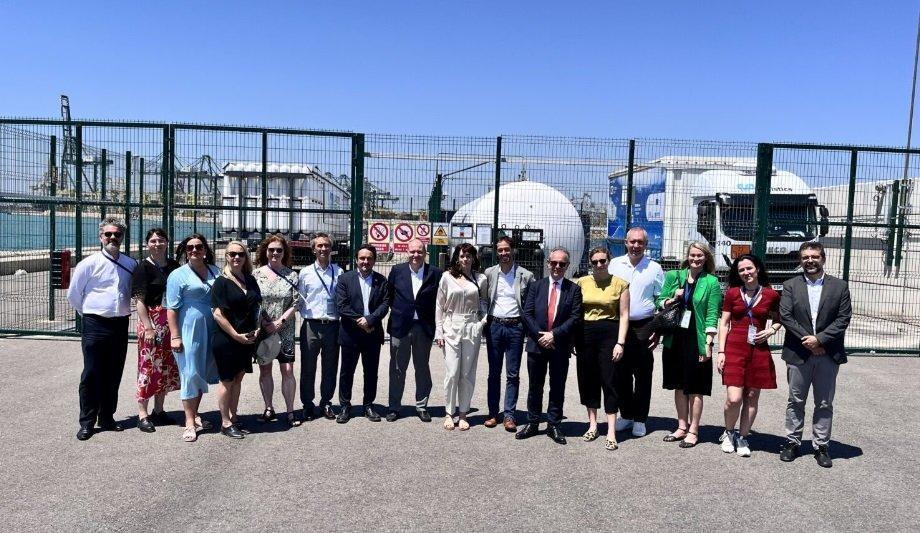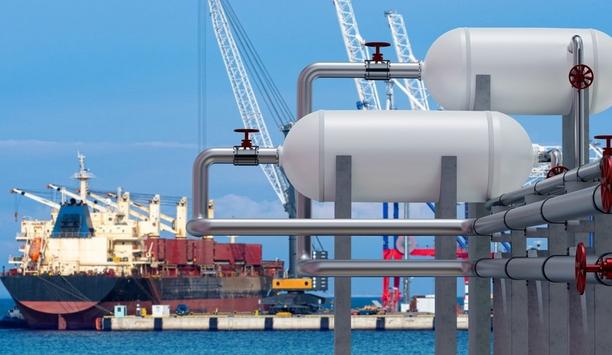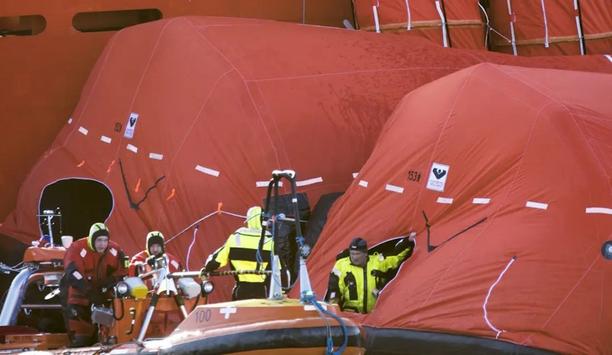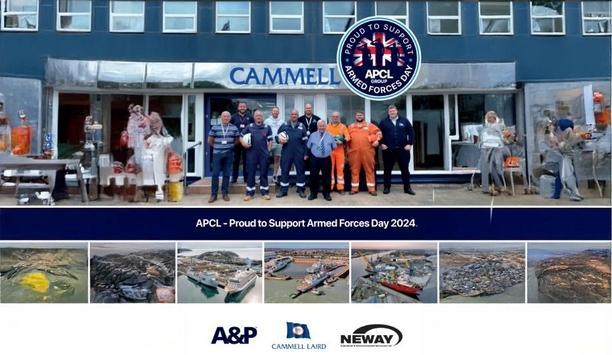A delegation of European representatives of the Environment visited this morning the Port of Valencia. Led by Patrick Child, deputy director general of Environment of the European Union (EU), the group of ten officials -from six different EU nationalities-, three representatives of the City of València, and Maider Etxebarria, mayor of Vitoria, have toured the site in order to see the environmental projects that Valenciaport has underway.
Along with Child, have visited the Port of València Clara Goerlich, Deputy Director General for Research and Innovation of the EU; André Sobczak, Secretary General of Eurocities; Sissel Knutsen Hegdal, Mayor of Stavanger with her advisor; Elina Rantanen, Deputy Mayor of Turku and her advisor Maria Granlund; Dagur Eggerston, Deputy Mayor of Reykjavic and his advisor Hrönn Hrafnsdóttir; and Filipe Araujo, Deputy Mayor of Porto. Antonio Garcia, General Director of Green Capital, José Marí, Councillor for Major Projects, and María del Mar Ferrer from Valencia Innovation Capital attended on behalf of the Valencia City Council. Maider Etxebarria, mayoress of Vitoria, also joined the tour.
Functioning of the Valencian enclosure
The operation of the hydrogen plant is completed with the pilot of the real use of the Reach Stacker
Antonio Torregrosa, director of the Valenciaport Foundation, has been in charge of explaining the functioning of the Valencian enclosure and solving the doubts about the environmental projects that are being implemented in the Port of València. Thus, after a first stop at the Martillo (end of the southern counterlike), they visited the facilities of the hydrogen plant, a pioneering facility in a European port area that uses hydrogen technologies to reduce environmental impact.
Framed in the H2Ports project, the operation of the hydrogen plant is completed with the pilot of the real use of the Reach Stacker (container stacker that will be powered with this energy) – which is being tested at MSC Terminal Valencia-, and the pilot of use of the conventional 4×4 tractor head – which is tested in the loading and unloading operations at Valencia Terminal Europe of Grimaldi Group.
Environmental facilities and initiatives
Likewise, the European representatives have also shown great interest in the operation of the solar panels installed in the Príncipe Felipe dock and in the progress of the construction of the photovoltaic plant in the VTE silo.
These environmental facilities and initiatives-developed by Valenciaport with the aim of achieving climate neutrality: Zero Emissions goal-are developed with the objective of increasing the competitiveness of the customers of the Valencian docks through the efficient and sustainable provision of logistics and transport services and are a benchmark in the European port system.











